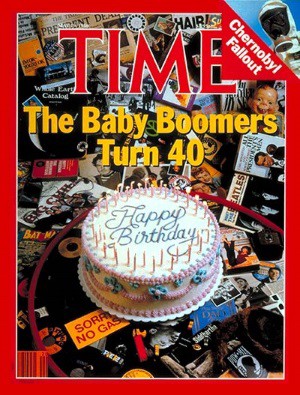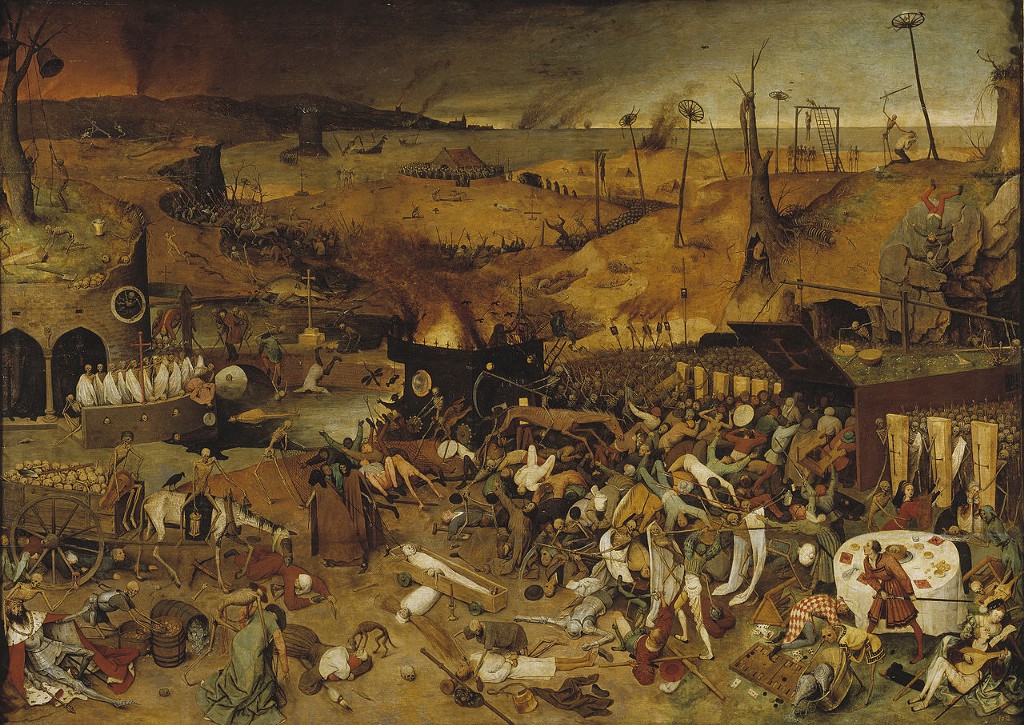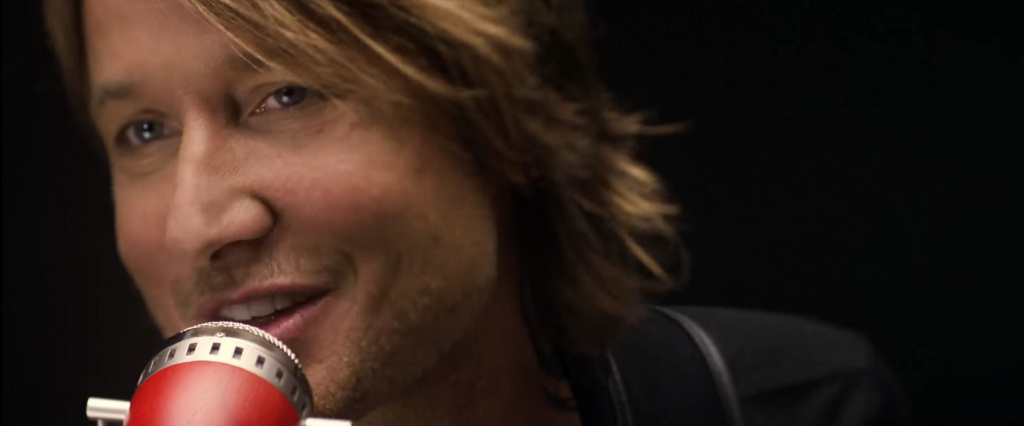How Do We Make The Old People Pay?
The Boomers will keep doing it to us until they die.

Earlier this week an especially incisive commentator characterized the Baby Boomers as
indisputably America’s most selfish and terrible cohort. They broke the country beyond repair and are still sucking out the last bits of blood on their way out the door. They fucked everything up, stuck us with their awful music, commodified nostalgia to an extent that is still almost incomprehensible, valorized avarice and self-regard to the point where they are now aspirational attributes, and won’t even die without draining whatever tiny shreds of hope and dignity remain to the nation, all the while wondering what we’re so upset about because everything seems fine to them.
Now the Washington Post asserts that “the generation that was born into some of the strongest job growth in the history of America, gobbled up the best parts, and left its children and grandchildren with some bones to pick through and a big bill to pay” is “what’s wrong with America’s economy.”
I guess it’s good that we’re finally acknowledging the scope of the problem and identifying the party responsible for it, but I think we need to hurry up and figure out a way to shake loose all their ill-gotten gains before they are able to make their final exits. Or at least before they start celebrating their 70th birthday. God, that’s going to be insufferable. I can already hear Jimi Hendrix’s version of “All Along The Watchtower” playing over footage of helicopters flying over Vietnam and then cut to some old fucking hippie who made millions of dollars selling his granola company to General Mills talking about how “we changed everything, man.” You know what? Maybe I’d be happier if they just all died. They’ve dug us a hole so deep there’s not really any amount of money we can get from them that would help us fix things anyway. Let’s just bring on the ULTIMATE BIG CHILL. (The big chill of death, I mean.) It’s the only thing that will shut them up.
Kiasmos, "Swept (Tale Of Us Remix)"
Everything is terrible and it takes more and more of an effort for you to pretend that it’s not. The things you once found fun and filled with possibility are now events to be endured or avoided altogether. Memories of conversations you had days and weeks ago keep popping up unbidden at inopportune moments to make you cringe or mutter aloud involuntarily. The more you realize exactly how everyone else sees you the less you want to do anything at all. Your recent failures seem to linger longer in your head than even your earlier embarrassments, reminding you that the time left ticks down and the lofty dreams you once had for yourself will probably never come true. Most days you wish you could just disappear. This day, however, is Friday, and it’s going to be seventy-fucking-five degrees. 75! In November! I am not going to tell you that your life is going to get better, but for today at least it is not going to get much worse. Embrace that. You can hate yourself again tomorrow. Enjoy.
New York City, November 4, 2015

★★ The jack-o’-lanterns had begun to soften and sag, mouths furred with mold, overnight in the tropical warmth. The light hoodie was a talisman to carry over a short-sleeved arm, in accord with the richly golden leaves in the gutters, despite the bright and unreal haze. Bare legs and shoulders were out again, tanless and unprepared. A flash of light from a chrome grille announced a black SUV creeping up on the crosswalk. By late afternoon, up on the roof, some chill had reestablished itself on the air. Cargo cranes stood in the smoky distance downriver, their shapes like giraffes against the lowering light.
What's Burning in the South Bronx?
by Brendan O’Connor

A week ago, on the Thursday before Halloween, a real estate developer, an art dealer, and an artist threw a party for celebrities, athletes, and politicians at an abandoned warehouse in Mott Haven, a neighborhood in the Bronx where more than half of the population is on some kind of public assistance. The warehouse is owned by Somerset Partners and the Chetrit Group, a pair of developers that purchased a pair of lots — 101 Lincoln Avenue and 2401 Third Avenue, last November and January, respectively — for $58 million. The developers have filed plans to knock down the existing buildings and put up market-rate rentals (and possibly condos), and have already begun rebranding the neighborhood as “The Piano District,” in reference to its history as the site of several major American piano manufacturers. But first, there was to be a party.
What a night… #LucienSmith #MacabreSuite #contemporaryart #SouthBronx #lovenyc
A photo posted by Olive Allen (@olive_allen) on Oct 30, 2015 at 11:28am PDT
All of the beautiful people were there: Kendall Jenner and Gigi Hadid; Carmelo Anthony and Odell Beckham Jr.; John Varvatos, Naomi Campbell, and Adrien Brody. Welcome2theBronx reported that borough president Ruben Diaz Jr was also in attendance. Travis Scott played a set. (“I don’t know who threw this party,” he said as he took the stage.) “The Bronx is LIT! Rave in the Beethoven piano factory before it all soon becomes condos!” fashion journalist Jim Shi tweeted. “Eating Roberta’s gourmet pizza. The homeless not amused.”
A photo posted by Lara Leito Love 👸🏽 (@andie.ann) on Nov 1, 2015 at 9:47am PST
But the star of the show was twenty-six-year-old artist Lucien Smith, whose work — inspired by from the medieval “danse macabre,” a deeply Catholic idea represented in many artworks that death, no matter one’s status in life, is the great equalizer — decorated the warehouse. The party was dubbed “Macabre Suite.” “The entire night was curated by Lucien. Each painting relates to some kind of macabre suite, so it’s all thematically based,” dealer and gallery owner Jeanne Greenberg-Rohatyn told Womens Wear Daily. “Most of them have to do with some kind of still-life death story.” Photos posted to Instagram and Twitter show burned out cars riddled with bullet holes, flames licking out of garbage cans, and a room full of votive candles. “This night is all about ‘let’s bring all sorts of people in New York to one place’ and making something they remember rather than like, going to a club,” Smith said. “No one remembers going to a club.”
Actually, what this night was “about” sort of depended on who you asked. “We’re developing about two thousand apartments along the waterfront in the South Bronx,” Keith Rubenstein, founder of Somerset partners, told WWD. “Tonight is an amazing opportunity to introduce a whole new world to the South Bronx, and celebrate its heritage.”
A photo posted by Heather Marks (@heatherdmarks) on Oct 30, 2015 at 8:49am PDT
A few days before the party, a billboard went up over the intersection of Bruckner Boulevard and the Third Avenue Bridge, advertising the so-called “Piano District” to drivers commuting between Manhattan and Westchester County and Connecticut, promising “luxury waterfront living” and “world-class dining, fashion, art + architecture.” Reaching back into the distant, depoliticized past is a great way for developers to imbue a neighborhood with ambient authenticity — much more so than combining two existing neighborhood names into an awkward portmanteau, at least. It would, after all, be difficult to market the neighborhood as it currently is to investors and up-scale gentrifiers. (According to a 2014 report by the Manhattan-based Institute for Children, Poverty, and Homelessness, approximately forty percent of South Bronx residents live below the federal poverty line, and thirty-five percent spend more than half their income on rent.) At the party, Rubenstein told the Real Deal, “This will be the most transformative project in the last fifty years.” Addressing the few Bronx landlords in attendance, Michael Brady, director of special projects and governmental relations at the South Bronx Overall Economic Development Corporation, said, “The minute the shovel goes in the ground here, their property values go up fifteen percent.”
Last year, real estate investors poured $2.39 billion into the Bronx, a thirty-nine percent increase from 2013, according to Ariel Property Advisors’ Bronx 2014 Year-End Sales Report. “A leading indicator of this new activity was the Chetrit Group’s fourth quarter closing of 101 Lincoln Avenue in the South Bronx,” Ariel’s vice president, Scot Hirschfield, told Real Estate Weekly. “This project is within the Lower Grand Concourse Waterfront project along the Harlem River south of 145th Street where the borough’s leadership is seeking to create a commercial and residential complex offering up to four thousand residential units.” The two warehouses are located in the Special Harlem River Waterfront District, a zoning designation created in 2009 to encourage investment in this part of the South Bronx. In November, the Wall Street Journal reported, the South Bronx Economic Development Corporation estimated that redevelopment of the area would cost $500 million in private investment and at least $200 million in government funds. Earlier this year, the mayor announced that the city would make a $200 million capital investment in the neighborhood. “Once the Somerset project gets under way, I think you will see a total turnaround of this area,” Brady, the development corporation’s director of special projects, who made the comment about property values going up, said. “I think you will find this area becomes Williamsburg meets Dumbo.”
A photo posted by @katklopp on Oct 30, 2015 at 12:00pm PDT
Partners Somserset and Chetrit have so far filed plans for two mixed-use towers with twelve hundred units between them, the Real Deal reports. (It’s been a year of highs and lows for the powerful and rarely quoted Chetrit, who, the New York Observer reported in 2011, made $2 billion in trades at the height of the real estate boom, in 2007. In March, his firm sold Chicago’s famous Willis Tower — commonly referred to as the Sears Tower — to the Blackstone Group, which recently purchased Stuyvesant Town, for $1.3 billion; last month, Chetrit was accused of helping to launder $40 million in stolen money.) There are plans for as many as six twenty-five-story towers altogether, the Journal reported in March. “The recent discovery of the Bronx Waterfront makes perfect sense in today’s real estate environment,” said Douglas Harmon, a senior managing director for Eastdil Secured, who brokered the deal and secured financing for the developers. “What we think we can do for the waterfront is set the tone for the next wave of developers,” Rubenstein told the Journal. “This [place] had character and already had a scene, so you are taking something good and adding to it.”
Naturally, plenty of locals dispute whether anything good is in fact being added to their neighborhood. Welcome2theBronx blogger Ed Garcia Conde has reported aggressively on speculative development in the borough, and Bronx artist Karen Pedrosa launched a social media campaign, #WhatPianoDistrict, in response to Somerset and Chetrit’s rebranding effort. “Them just trying to rebrand an already established neighborhood is what really pissed me off, and that’s why I said, ‘What Piano District?’” she told DNAinfo. “To me, there is no Piano District there.”
This is of no concern to Rubenstein. “There will be plenty of people that will be able to afford it and, unfortunately, there will be people that won’t be able to afford it,” he told the New York Daily News
in April. “The beautiful thing about our project is we’re not displacing anybody,” he said. “It’s not like we’re tearing down old apartments and replacing low-income-producing buildings with high-income-producing buildings. We’re taking underutilized industrial land and turning it into prime residential housing. I think that benefits everyone.” But just because people aren’t being evicted doesn’t mean that they aren’t being displaced — introducing market rate and luxury housing and retail into a lower-income area inexorably makes such an area less affordable for the people who are already living there.
A photo posted by d’Isigny Studio (@disignystudio) on Oct 30, 2015 at 10:23am PDT
Anyway, the existing warehouses — and with them any actual connection to immediate area’s mythic past as the piano capital of America — will be demolished soon enough. Those who cannot afford to stay in the neighborhood when luxury waterfront living comes to the South Bronx will leave, and those who can will endure, maybe. Eventually, everyone will die, no matter where they lived, and judgement will either be passed or it will not. Hell is still burning, even if the Bronx isn’t anymore.
Top Image: The Triumph of Death via Wikimedia
All-American Drag
by Alice Bolin

At the CMA Awards on Wednesday, John Mellencamp sang his classic “Pink Houses,” joined by the Australian singer Keith Urban, who politely shredded the guitar (in a women’s blazer and a wifebeater) and helped Mellencamp to question if that ain’t America. This was the most meta performance of the night, and “Most Meta Performance at the CMA Awards” may be a niche honor, but Urban has certainly never won it before.
They were partly sending up Urban’s “John Cougar, John Deere, John 3:16,” country radio’s best and dumbest no. 1 hit this summer. The song’s lyrics are a brocade of American kitsch, including John Wayne, Superman, rock and roll, Gibson guitars, Marilyn Monroe, and “American Pie.” The title so elegantly and obviously brings together the three most conspicuous influences on contemporary American country radio — dad rock, the American farmer, and Jesus — that the natural reaction to it is to giggle.But there’s something beautiful about using ideas that are so lazy — about not being satisfied with one cliché, but hungering for them all.
Recently, I talked to a friend who listens to country radio too, and I tried to bring up “John Cougar, John Deere, John 3:16.” “I don’t listen to Keith Urban,” she said.
“Even if he just comes on the radio?”
“I turn the radio off.”
Urban trades mostly in the schlocky, over-produced stadium rock that makes modern country radio hopelessly boring. More women have infiltrated the country charts after a three-year dry streak in which no solo female had a number one single, but most contemporary country is still made by hard-to-distinguish white guys like Urban in denim button-ups, exploring uncontroversial subjects (“small town living is nice”; “cancer is bad”; “it’s great to relax on the weekend with Brand Name Alcohol™”) that aren’t hard to be sincere about. The number-one single on the Hot Country Songs chart for nearly the entire month of October was Luke Bryan’s fourteenth number one hit, “Strip It Down,” a trite, lugubrious love song where Bryan longs to make love “like it used to be/When it was an old back road with an old school beat/Cowboy boots by your little bare feet.”
“John Cougar, John Deere, John 3:16” was written by three Nashville songwriting fixtures, Shane McAnally, Josh Osborne, and Ross Copperman, who have written twenty top ten singles between them, and for whom it was probably an easy retread of subjects they’ve covered many times before. But pairing the song with an Australian singer made both “John Cougar, John Deere, John 3:16” and Urban more interesting. The song’s aggressive pastiche of nostalgic American music feels more self-conscious and bizarre — more, in fact, Australian. Australia’s entertainment exports, including Kylie Minogue, Hugh Jackman, and Olivia Newton-John, often exude a presence that is energetic, corny, colorful, and weird.
This same Minogue-ian flamboyance lends “John Cougar, John Deere, John 3:16” the quality of a song from a musical — it is self-consciously comic while still seeming sincere. The song isn’t a parody, but it is a broad attempt at a genre that ends up a little more polished than its model. The lyrics at times are too winking, like when Urban sings, “I’m Mark Twain on the Mississippi / I’m Hemingway with a shot of whiskey / I’m a TV dinner on a tray trying to figure out the Wheel of Fortune.” When I hear the song, I picture Courtney Act — the beautiful, crazy-eyed drag queen from season six of RuPaul’s Drag Race, who insisted many times that she was “a household name in Australia” — belting it out in star-spangled chiffon.
Or I hear it in Lana Del Rey’s NyQuil croon, as she sways, eyes closed, under the stage lights. Some lines from “John Cougar, John Deere, John 3:16” sound straight out of the Lana Del Rey songbook, especially Urban’s invocation of “Marilyn Monroe and the Garden of Eden.” (Del Rey once traced her lineage by singing, “Elvis is my Daddy, Marilyn’s my mother, Jesus is my bestest friend.”) Icons of American pop culture are everything to Del Rey’s self-constructed persona, which is a mid-century throwback either to the girl on the back of James Dean’s motorcycle or the girl in a corner of a beatnik coffee shop. She enacts an American identity where the imperative is to “be young, be dope, be proud.” Or as the forty-seven-year-old Urban puts it, “Never grow up, never grow old.”
Every performance is a fantasy: Del Rey acts like she’s in one of those sixties songs about the Homecoming Queen who dies in a car crash, while male country singers’ names sound like they’re drag kings or male strippers: Brantley Gilbert, Easton Corbin, Dierks Bentley, Chase Rice, Cole Swindell. (Though, of course, Urban’s name should by rights be Keith Rural.) They’re all living an American gender dream. Country’s king of macho patriotism is still Toby Keith, who famously sang in 2001, “We’ll put a boot in your ass / It’s the American way,” making him our popular representation of the early-aughts warmongering butthead. He has trademarked a type of American masculinity that exposes it for the campy farce that it really is. Even his look — the cheap, truckstop cowboy hat and all those bracelets — is cartoonish.
That’s why I’ve come to like Toby Keith, or at least feel some pathos towards him. His songs, even at their most sad-faced and somber, are country burlesques more comical than “John Cougar, John Deere, John 3:16.” In “American Soldier,” he sings, “I’m an American soldier, an American… When liberty’s in jeopardy I will always do what’s right / I’m out here on the front lines, so sleep in peace tonight.” His “America” songs have the subtlety of a patriotic baton routine in a child’s beauty pageant, and there are so many of them: “American Ride,” “Made in America,” “Courtesy of the Red, White, and Blue (The Angry American),” “The Taliban Song.” If you look at it sideways, the jingoism dissolves into charming theatrics: If Toby Keith is anything, he’s flamboyant. But what do you do when your persona becomes a product, and your drag — the blonde mullet, the frat boy jewelry, the spray tan — becomes all you are?
You lean in, and exploit your brand ever more shamelessly; self-parody is a career hack if there ever was one. There are twinkling indications that country radio’s first interesting moment in years is upon us — the genre’s most innovative artists are actually doing country rap pretty successfully. If one is going to cling to conservative, white guy ways, they should learn from Toby Keith about exaggeration and exuberance, about the sweet spot between laughing with and laughing at. Urban used to be mostly notable for being the country star who is least distinguishable from his Madame Tussauds wax figurine, but with “John Cougar, John Deere, John 3:16,” he realizes all of Keith’s kind of country potential. He can babble in the song about being “just another rebel in the great wide open on the boulevard of broken dreams” and still come to a full revival tent conversion in the song’s bridge, urging listeners that “there’s only one way home.” Every performance is a fantasy. And ain’t that America.
Accent Explained
Awl pal Dan Nosowitz’s long-ass piece on why Italian-Americans talk funny is actually worth the time it’ll take you to read.
The Sounds Of Seasons Changing

“The Pop Ambient series, launched by the Cologne label Kompakt in 2001, is an annual compilation of lush ambient textures, packaged in a pastel-tinted case featuring photos of flowers in full bloom. Several of the tracks on Pop Ambient 2016 suggest nature and the changing of the seasons. In general, the series showcases the gentler, more melodic side of ambient electronic music, with nothing too dark or jarring. There are few beats, if any, and no vocals. Think of it as a hazy soundtrack for falling asleep and dreaming, or as mellow instrumental music to play during a dinner party, or as a calming balm to get through a difficult work day. But there’s richly varied and sometimes revelatory music on here, crafted by a high-profile raft of contributors.”
— If this seems like something you’d be into I can totally vouch for it.
A Poem by Katy Lederer
by Mark Bibbins, Editor
Fetus Papyraceus
Sometimes, in the middle
of the night, our children will
insist that we tell them a story.
In the story, after heavy
rhyme and insistent inculcation
of our cultural mores,
our children will look down
at our apparent missing limbs,
which remind them
that they should not touch,
and, if they do decide to touch,
that absence can feel presence.
It can be difficult, this lesson,
and the children are defenseless
as we read to them this book.
They like to flap their hands
and look: at animals that long ago
died out. They roar and raise
their trunks. They lurk, alertly,
in their dens. We wonder
what has happened to their spirits
and discover, as an exercise,
such thinking is instructive.
Where is the presence
and the absence in this book?
The world is full of lulls
and shocks. To describe them all
would take a million lives.
What would it mean
to use up our one life like this?
And so we peel the pages back.
It is a treasure, this book.
It is a treasure beyond
the other treasures in the world
because the book is like
nothing. It is blank
with little colors, there.
Made from deciduous forest
and the end of time. We had once
walked along the boardwalks
very bored, in heavy weather,
under moonlit stars.
We had once held
our children in our arms.
Katy Lederer is the author of the poetry collections Winter Sex (Verse) and The Heaven-Sent Leaf (BOA Editions), as well as a memoir, Poker Face: A Girlhood Among Gamblers (Crown). This poem is from The Engineers, a new series of poems about genetics, autoimmunity, deformity, and motherhood.
You will find more poems here. You may contact the editor at poems@theawl.com.
Chromatics, "Girls Just Wanna Have Fun"
In yet another installment of their ongoing series of efforts aimed at doing anything apart from actually putting out a new album, Chromatics are releasing about 700 different versions of early 1980s pop classic “Girls Just Wanna Have Fun.” There’s a “dreamy” interpretation here, but I much prefer the variation above, as it does an excellent job of conveying the darkness and menace that were always present just below the surface of insistent glassy exuberance which characterized that terrible decade. Enjoy.
New York City, November 3, 2015

★ Down around the edges of the fine blue dome a brown grime was lurking. Music came in so clearly and loudly it was as if windows were already open; when the window was opened, the sound was no easier to pinpoint. The trees down below were getting closer to full color, but the boots were still up on a shelf, the foot socks were still on. The warmth was enchanting, enchanting as a house made of cake and sugar in the forest, enchanting as a palace filled with luxuries with one locked upper room. A double-decker tour bus rolled by, its entire side covered by an ad for the Times Square branch of a tropical party bar chain. The haze was a cataract over the view down Broadway. The sun was so low and bright it made the eye muscles cramp, so radiantly warm even the light jacket had to be shed. And nonetheless the early dark came. The dark came when the dark would.
